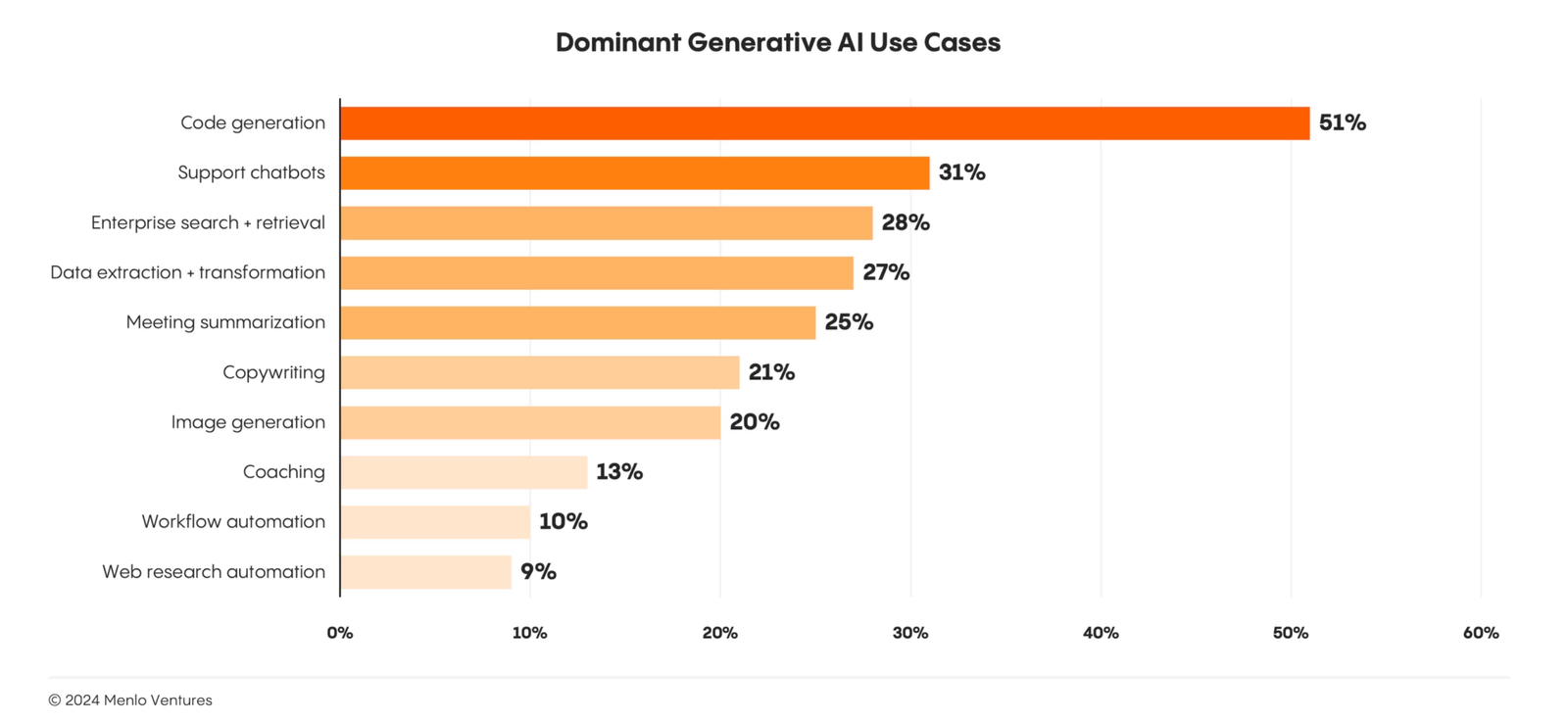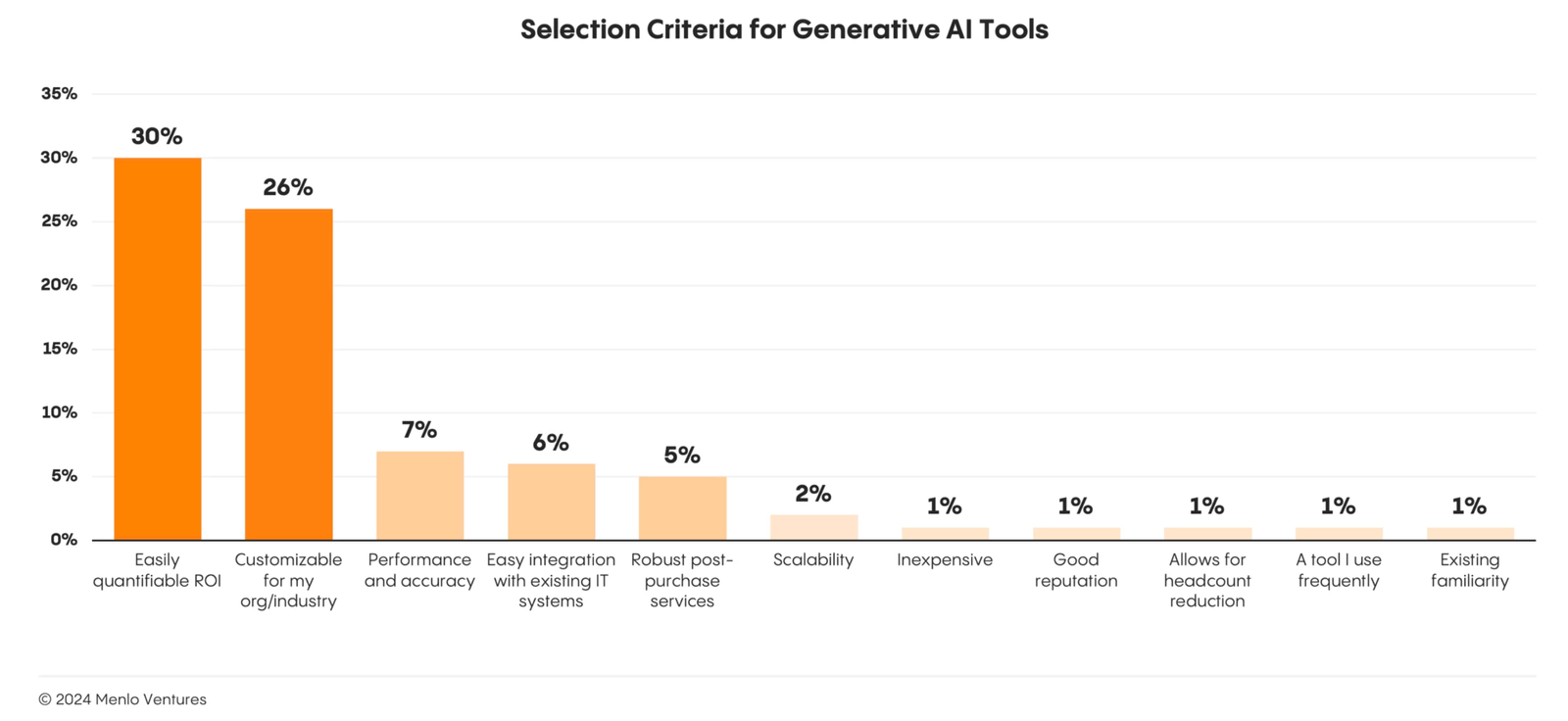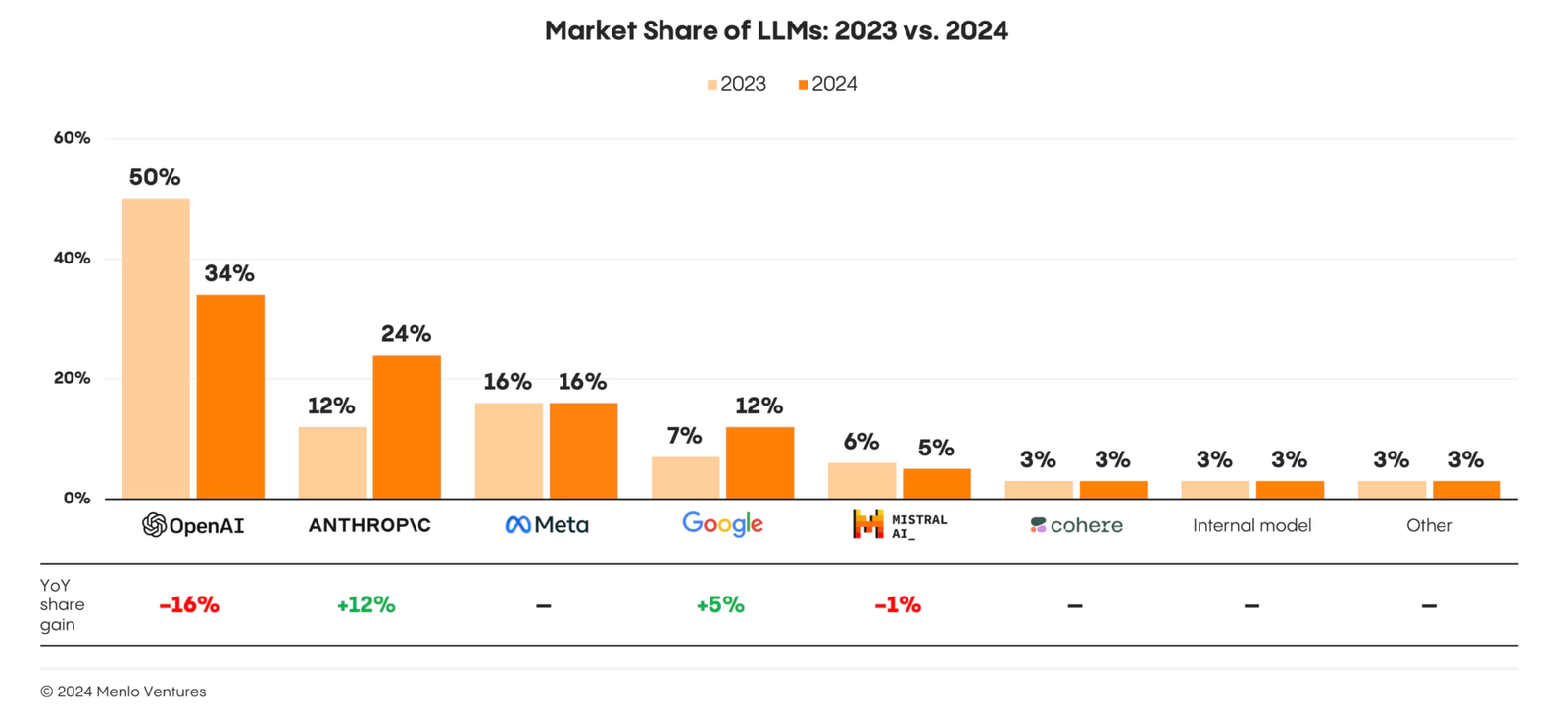Enterprise AI Spending: What the Numbers Tell Us About Implementation
You might be wondering if businesses are actually implementing AI or if it’s all just talk. Well, the numbers are in, and they’re telling an interesting story about how companies are moving from experimentation to real implementation.
According to Menlo Ventures’ latest State of Generative AI in the Enterprise report, enterprise spending on AI has grown from $2.3 billion to $13.8 billion in just one year. That’s a 500% increase!
But what’s really fascinating isn’t just the numbers – it’s what they reveal about where businesses are heading with AI implementation.
The Big Picture: Investment vs. Implementation
Big Tech companies aren’t just dipping their toes in the water – they’re diving deep into the AI pool. Microsoft, Amazon, Meta, and Google combined are on track to spend around $240 billion on AI infrastructure this year. That’s serious commitment to building the foundation for AI tools and services.
But here’s what’s particularly interesting: while Big Tech is building the infrastructure, regular businesses are starting to put AI to practical use.
The top five ways companies are implementing AI right now:
- Code generation
- Support chatbots
- Enterprise search and retrieval
- Data extraction and summarization
- Meeting summarization

These aren’t experimental use cases – they’re practical applications that solve real business problems. Companies aren’t just playing around with AI anymore; they’re putting it to work.
If you’re still in the planning phase of AI implementation, you’re not alone. But here’s something to consider: businesses aren’t primarily concerned about the cost of AI tools. What they really care about (and what you should focus on) is getting clear returns on their investment.
In fact, a third of surveyed companies said their main criteria for choosing AI tools is easily quantifiable ROI.

The Changing Landscape of AI Providers
There’s another interesting shift happening in the AI space. While OpenAI was once the dominant player, we’re seeing the market become more competitive.
Anthropic has doubled its market share to 24%, while OpenAI’s share has decreased by 16%.

This competition is good news for businesses because it means:
- More options to choose from
- Competitive pricing
- Continued innovation in features and capabilities
What Should You Do Next?
- Start Small but Start Now:
Pick one of the common use cases mentioned above that makes sense for your business. - Focus on ROI:
When implementing AI tools, set clear metrics for success and track them religiously. - Stay Flexible:
With the AI provider landscape changing rapidly, avoid locking yourself into a single platform if possible. - Think Long-term:
While the current spending levels might not be sustainable forever, the trend toward AI implementation is clear. The question isn’t if you should implement AI, but how and when.
Moving Forward Together
These numbers and trends can feel overwhelming, but remember: every successful AI implementation starts with a single use case and grows from there. The key is to start with clear goals and build from your successes.
Want to learn more about implementing AI in your business? Join us in The Hybrid Advantage community. It’s free to join, and you’ll connect with others who are navigating the same journey. Together, we can turn these industry trends into practical action steps for your business.







